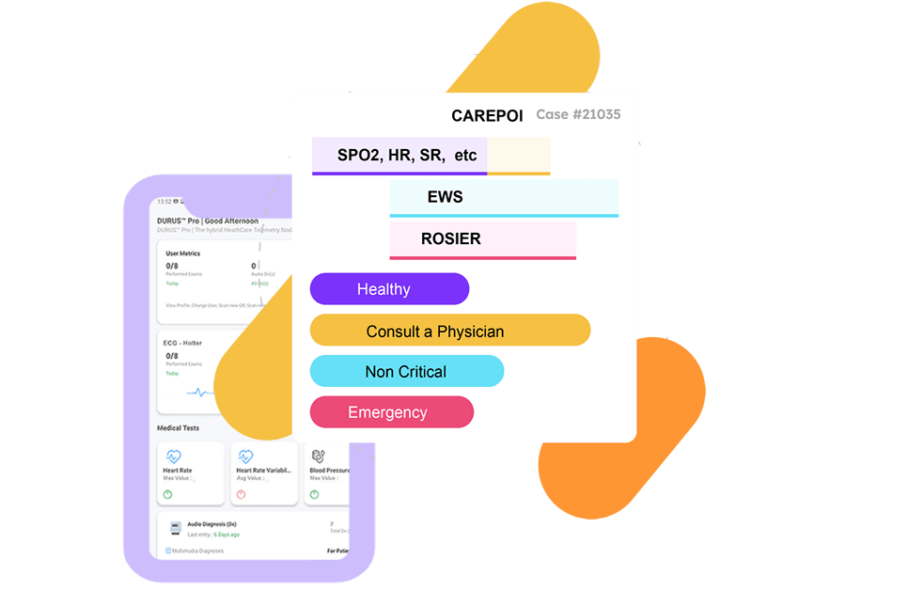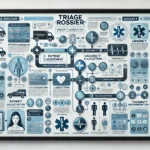The modern healthcare system faces numerous challenges. One of the most critical areas is Emergency Departments (EDs). In many countries, including Greece, the demand for emergency medical care is increasing. This has led to overcrowding in EDs, making them the busiest sector in hospitals. Overcrowding negatively impacts the patient experience and undermines the quality of healthcare services provided. Moreover, the need for effective patient management through the triage process is more urgent than ever.
The Overcrowding Issue in Emergency Departments
The increasing pressure on EDs results from various factors. As populations age and chronic conditions become more prevalent, patients are seeking urgent medical services more frequently. According to the American College of Emergency Physicians, visits to EDs have increased by 30% over the last decade (2023). This increase has not been accompanied by a corresponding rise in resources, leading to patients waiting for hours, even days, to receive the care they need.
In EDs, patients are classified based on the severity of their conditions. However, limited resources and excessive patient numbers make accurate assessments challenging. This situation results in delays in treatment delivery, which can have serious health consequences. Studies have shown that prolonged waiting times are associated with increased rates of complications and mortality (Kellermann & Weinick, 2012).
The Importance of Triage
The triage process is the method by which healthcare professionals assess patient conditions and categorize them based on urgent need for treatment. This process is vital for managing overcrowding in EDs, as it ensures that the most severe cases are prioritized.
Triage Models
Several triage models are widely used in EDs. The most common include the Emergency Severity Index (ESI) and the Canadian Triage and Acuity Scale (CTAS). These systems provide clear guidelines for categorizing patients based on their symptoms and need for urgent care.
- Emergency Severity Index (ESI): This model uses a five-level scale to assess patients, with level 1 including the most severe cases and level 5 the least urgent.
- Canadian Triage and Acuity Scale (CTAS): The CTAS employs a similar approach but offers more details on diagnosis and patient condition.
Data and Statistics
Various studies have demonstrated the significance of the triage process in improving ED operations. According to a report from the American College of Emergency Physicians, 70-80% of patients presenting to EDs can be categorized as less urgent (2023). This means that the majority of patients can wait longer without jeopardizing their health. The triage process can reduce these waiting times by focusing attention and resources on the most urgent patients.
A study in Australia found that using the CTAS reduced waiting times in EDs by 20% and increased patient satisfaction (Cameron et al., 2018). These improvements are due to better resource allocation and more effective patient management.
Challenges in Triage Implementation
Despite the benefits of the triage process, challenges must be addressed. One of the main challenges is staff training. All ED personnel must be trained in the triage process to ensure patients are accurately categorized.
- Staff Training: Lack of training can lead to errors in patient assessment, resulting in delays in treatment for those who need it urgently. Good staff training has been shown to improve accurate patient assessment by 30% (Roshana et al., 2020).
- Patient Resistance: Resistance from patients is also a common issue. However, many patients do not understand the triage process and may feel their needs are not taken seriously. Educating patients about the triage process and its importance can help address these concerns.
Improvement Strategies
To effectively manage overcrowding in EDs, hospital administrations need to develop strategies that enhance triage implementation. Strategies include:
- Training and Education: Ongoing training for ED staff on triage procedures can improve reliability and effectiveness.
- Use of Technology: The adoption of digital tools and applications that support patient assessment and categorization can expedite the triage process and reduce waiting times.
- Improving Communication: Effective communication with patients regarding the triage process and waiting times can alleviate anxiety and dissatisfaction. Informing patients about expectations and the rationale behind triage decisions is critical.
- Enhancing Waiting Areas: Improving waiting areas can provide patients with a more comfortable experience while waiting for treatment. Offering comfortable seating, access to information, and support can reduce feelings of overcrowding.
Conclusion
To sum up, overcrowding in Emergency Departments is a complex challenge that requires immediate and strategic solutions. The triage process is a crucial tool that can help manage this situation, ensuring that the most severe cases receive the attention they need. Staff training, technology use, and improved communication are some strategies that can contribute to improving the situation. Collaboration among all stakeholders is essential to ensure patients receive the best possible care.
For more information on how triage effectively enhances resource management in healthcare, reduces waiting times, and improves patient experiences, you can explore our article titled “Triage in Healthcare: Effective Resource Management.” This article delves into the various aspects of triage, including its role in emergency settings, outpatient care, and during public health crises. It also discusses how implementing a triage system can streamline operations, optimize resource use, and ultimately lead to better patient outcomes.



